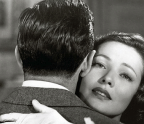
On an early 1980s episode of a Manhattan public-access television show, a slim man wearing sunglasses and a Mao suit walks onto the screen. He is about to treat viewers to a performance. “This is Kwong Chi, ladies and gentlemen,” says Kestutis Nakas, a Lithuanian American theater artist and the host of the program. “He’s been doing this kind of thing all over town.” Tseng Kwong Chi holds a cable release for a camera in his hand. The two shuffle into place, preparing to have their picture taken. The broadcast skips to them looking down at a Polaroid. Nakas points to a name badge on Tseng’s chest: “I see that you’re a visitor here.” “Uh-huh,” Tseng says, “I’m a permanent visitor here.” The badge on his chest was part of his character, a pretend Chinese dignitary, except that if you looked closely, it read “SLUTFORART.” Tseng’s appearance on the show, called Your Program of Programs, is the only video recording of one of the performances behind the artist’s Polaroid panel works, for which he would set up a camera at a location, usually a party, take self-portraits with everyone who arrived, then display them in a grid.
Tseng—performative conceptual photographer, documentarian of East Village life, “permanent visitor”—made his appearance on Nakas’s show just a few years after moving to New York. By this time, he’d alreadyhad: a gray Mao suit that he had purchased at a Chinese boutique in Montreal. The store’s owner had bought an entire warehouse of the suits, betting that they might be the next big fashion trend in Canada (they weren’t). Tseng’s parents were mortified, but the maître d’ mistook him for an ambassador and gave them the best table in the house. The suit would likewise help give Tseng entrée into New York’s downtown art world.






